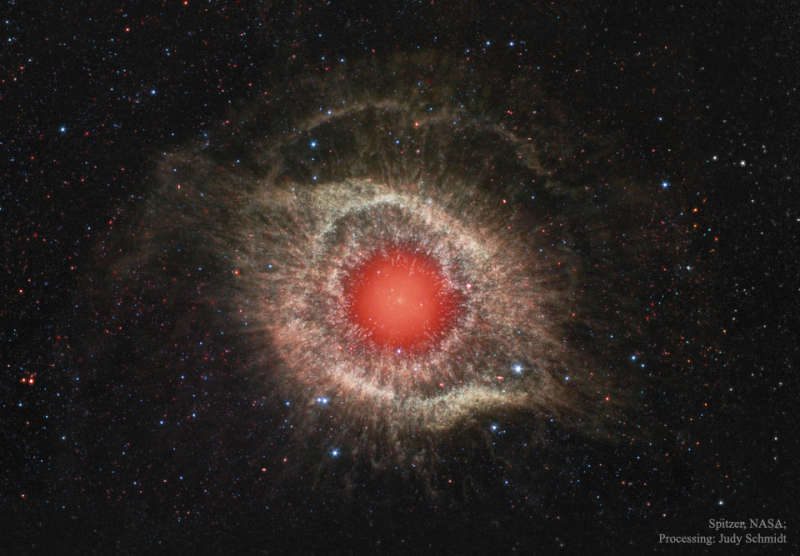 |
Астронет: Астрономическая картинка дня Туманность Улитка в инфракрасном свете http://variable-stars.ru/db/msg/1369440/eng |
Credit & Copyright: Judy Schmidt
Explanation:
What makes this cosmic
eye look so red?
Dust.
The featured
image
from the robotic
Spitzer Space Telescope
shows infrared light from the well-studied
Helix Nebula (NGC 7293) a mere
700 light-years away in the constellation of the Water Carrier
Aquarius.
The two light-year diameter shroud of
dust and gas around
a central white dwarf has long been considered an excellent
example of a
planetary
nebula, representing the final stages
in the evolution of a Sun-like star.
But the Spitzer data show
the nebula's
central star itself
is immersed in a surprisingly bright infrared glow.
Models
suggest the glow is produced by a dust debris
disk.
Even though the nebular material was ejected from the
star
many thousands of years ago,
the close-in dust could have been generated by collisions in
a reservoir of objects analogous to our own solar system's
Kuiper
Belt or cometary
Oort cloud.
Had the comet-like bodies formed in the distant planetary system,
they would have survived even the dramatic late stages of the star's
evolution.
Follow APOD on:
Facebook,
Google Plus,
Instagram, or
Twitter
Authors & editors:
Robert Nemiroff
(MTU) &
Jerry Bonnell
(USRA)
NASA Web Site Statements, Warnings,
and Disclaimers
NASA Official: Jay Norris.
Specific
rights apply.
A service of:
LHEA at
NASA /
GSFC
& Michigan Tech. U.
